“Wherever Man has left his footprint in the long ascent from barbarism or civilization, we find the hoof print of a horse beside it.”
- John Trotwood Moore
The relationship between horses and cars goes back a long time.
The strength and power of the horse was the original benchmark for gauging the power of engines in the late 18th century. The trait was determined after engineer, James Watt, discovered a horse could pull with an average force of 180 pounds-force, rotating a mill wheel 144 times in an hour. Horses are the original mode of human transportation and are known to be among the most relentless endurance runners on Earth, some horses are able to run up to 160 km without stopping.
But here’s the rub - they’re not just work animals or show creatures these days. Horseback adventures in British Columbia are on the rise, as are encounters with horses in more urban settings, so you’ll likely need to share the road with horses sooner than later. According to the BC government, there are 75,000 horses in the province, with 22,000 residing in the Lower Mainland.
In this post, we’re looking at how drivers should be sharing the road with horses.
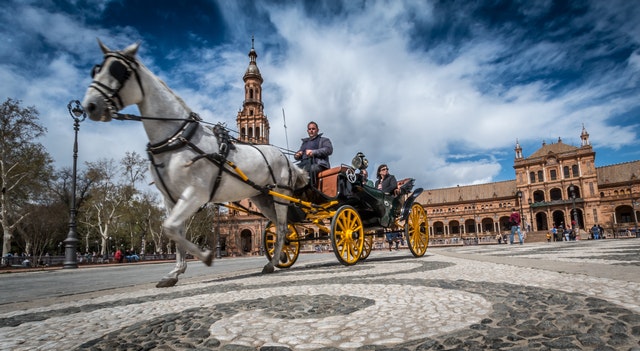
Horses & the Road
Navigating a horseback rider and their 4-legged companion is a requirement of driving on the road today.
Laid out in the BC Motor Vehicle Act - Part 3 Section 119 - you’ll find that horses and horseback riders are entitled to use public roadways in the same fashion as cyclists, pedestrians, and motorized vehicles. While horses may be included in the Act’s analogy of “traffic,” horses are quite a bit different from someone on a bike. They have their own subjective fears, cautions, personalities, and behaviours, so we must remember to approach, and treat them as such.
Horses can spook easily, and they’re sensitivity to the unknown can spark a powerful unpredictability in them, putting the animal, their riders, and others using the roadway in potential danger.
Driver Tips
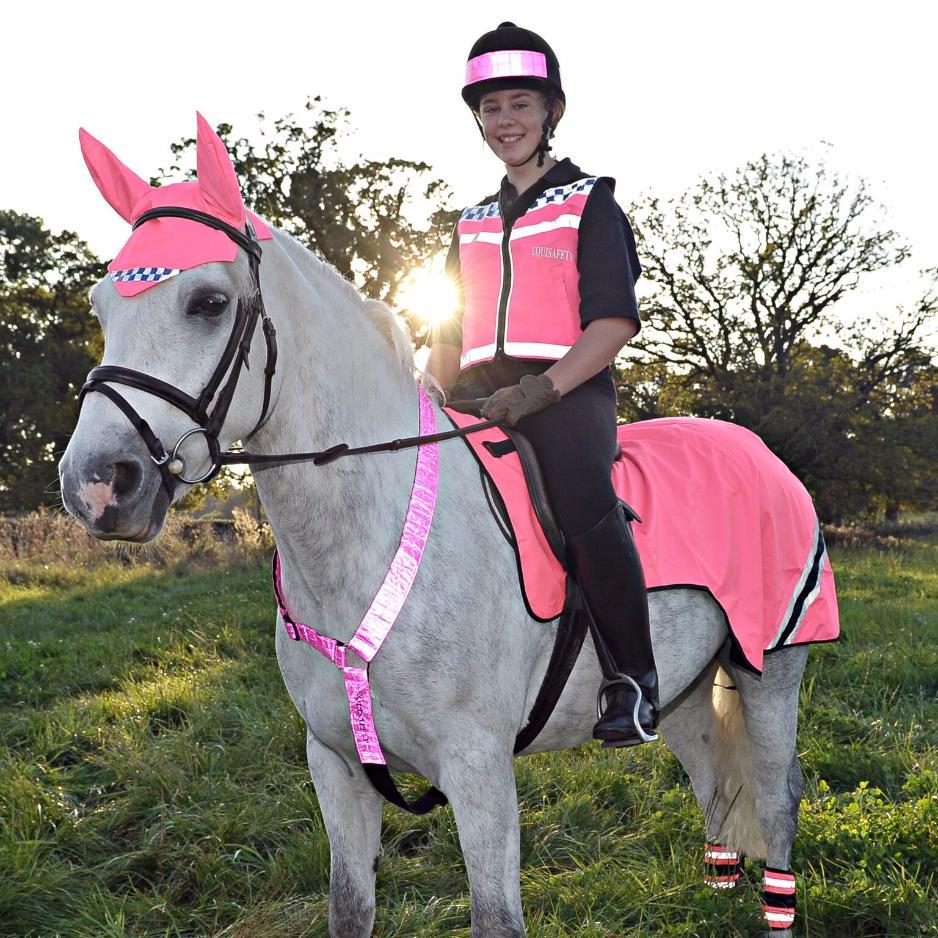 Give Them Room
Give Them Room
Don’t get too close to a horse while driving your car. Slow to a manageable, and unobtrusive speed to pass the animal, if it’s safe to do so. Always be sure to give a horse an extra wide amount of space of at least one car width. If there’s traffic, calmly wait until a break comes along so you can pass without causing horse or rider to become startled.
When passing these road users, drivers must keep a minimum of distance of one metre on highways with speeds of 50 km/h or less, and one-and-a-half metres on highways with speeds of 51 km/h or more.
Drivers passing vulnerable road users who are in separated and protected lanes and on sidewalks must allow a minimum of half a metre. The distances are measured from the furthest protruding part of a passing motor vehicle, such as a mirror, to the furthest protruding part of a vulnerable road user, like the riders leg.
Slow & Steady
This also means braking and accelerating slowly and calmly, so as to not spark their unpredictable nature with the sound of squealing tires or a loud exhaust.
Turn Off Your Stereo
Avoid passing a horse with your stereo cranked up to 11. Similarly to accelerating slowly, loud noises like music, yelling, or honking can cause horses to spook easy.
Prey Instinct
Horses have evolved to fear “packs” of oncoming creatures, whatever they may be. Like the proverbial wolf pack, if you’re approaching a horse and their rider on the roadway as part of a convoy of motorcycles, bikes, or joggers, this can startle the horse into thinking it’s being stalked by a pack of predatory animals. Proceed with a calm demeanor, and be sure to give them as much space as you can safely allow.
Endorsements & Patience
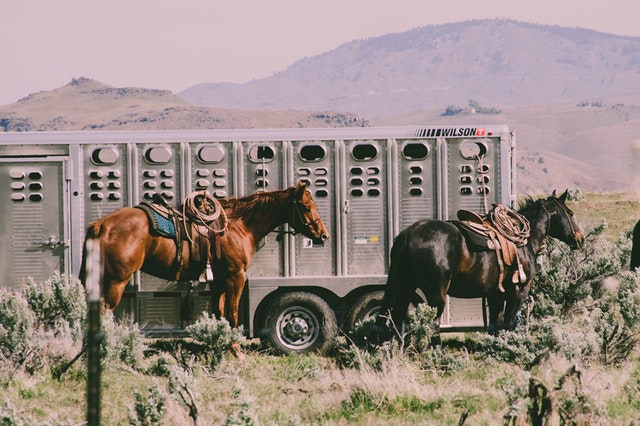
Sharing the road with horses doesn’t always mean you’ll encounter someone on horseback. Drivers also need to share the road with other drivers transporting the animals via trailer.
As the driver transporting the animals, the weight and size of your trailer may require a heavy trailer endorsement - specifically a Code 20 endorsement - in order to safely operate a trailer loaded with horses. The Code 20 endorsement ensures you are skilled in the specific handling and braking techniques required to tow a heavy cargo load, like a horse trailer.
As drivers sharing the road with those hauling horses, be respectful of space around the trailer, and always practice patience — towing a trailer with live animals is much different than hauling a load of hay, landscaping supplies, or your college freshman’s new mini fridge. Giving these drivers some additional space is a benefit to everyone on the road.
Rider Tips
Sharing the road goes two ways, and the BC Motor Vehicle Act has rules and guidelines in place for horseback riders, as well - riders are subject to the duties of the driver of a vehicle. Riders should ride single file on the right-hand side of the road with traffic. Keep approximately one horse length between you and the rider in front.
Steady As She Goes
Always ensure your horse is well-mannered enough and has sufficient exposure to automobiles and other motorized vehicles before taking them out on the roadway - even it’s just o traverse a section of blacktop as a trail connector.
Visibility
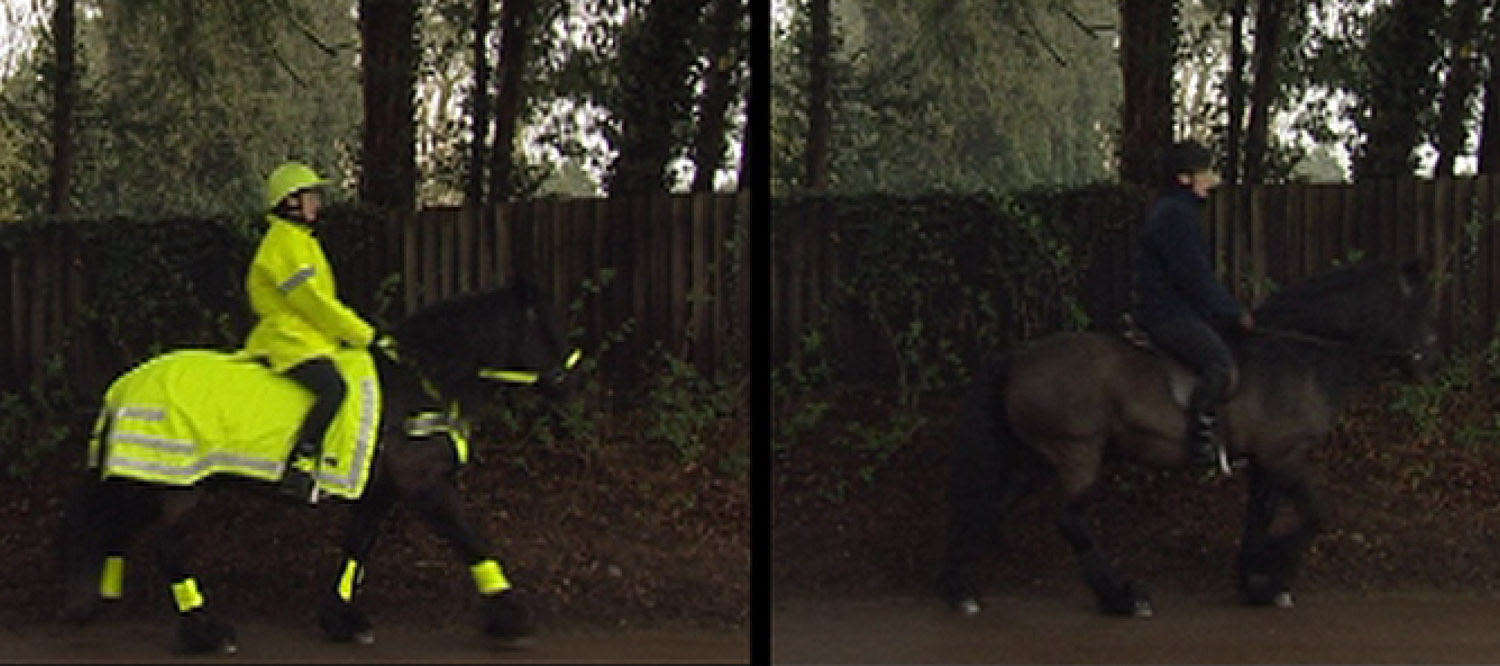
Motorcycle riders can attest to this one: double check and ensure you and your horse are highly visible. Increase your visibility with a reflective vest or jacket, as well as adding a reflective cover to your riding helmet. Adorn your horse in a quarter sheet and bonnet to attract the attention of drivers. You can also get reflective bracers, rein covers, and tail accessories to increase your visibility. Remember to obey all road laws and signage to reduce the chances of being missed.
Calm
Domesticated horses are incredibly intelligent animals that have the ability to read human emotions like sadness, anger, or nervousness. If you’re nervous or anxious about approaching a roadway, your horse may pick up on those emotions and could behave unpredictably should you panic.
Keep your horse in a state of calm and steady assurance by keeping your own emotions in check. If you’re too nervous to approach the road, don’t ignore that feeling, and look for another route to avoid traffic.
Signs
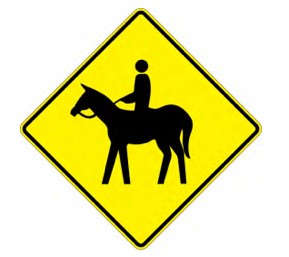 Horse and Rider Sign
Horse and Rider Sign
This yellow warning sign indicates you are travelling in an area that is frequented by horses and their riders. Use extra caution while travelling in these areas, especially if there is limited vision on these roads.
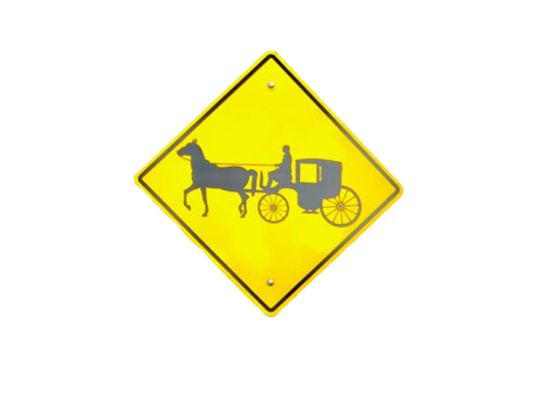 Horse Carriage Sign
Horse Carriage Sign
Similarly, to the horse and rider sign, the horse carriage sign indicates that you are in an area where you may encounter a horse carriage along the road. Use caution when travelling in these areas – horse carriages may have one or more horses pulling the cart or buggy.
Since their domestication by humans over 5000 years ago, horses have been regarded as the most reliable, valuable, and sought-after mode of human transportation, as well a coveted means of getting hard work done.
Learning to progressively, and peacefully coexist with horses as a driver today means approaching with caution, giving each other the room we deserve, and respecting each other's presence.
